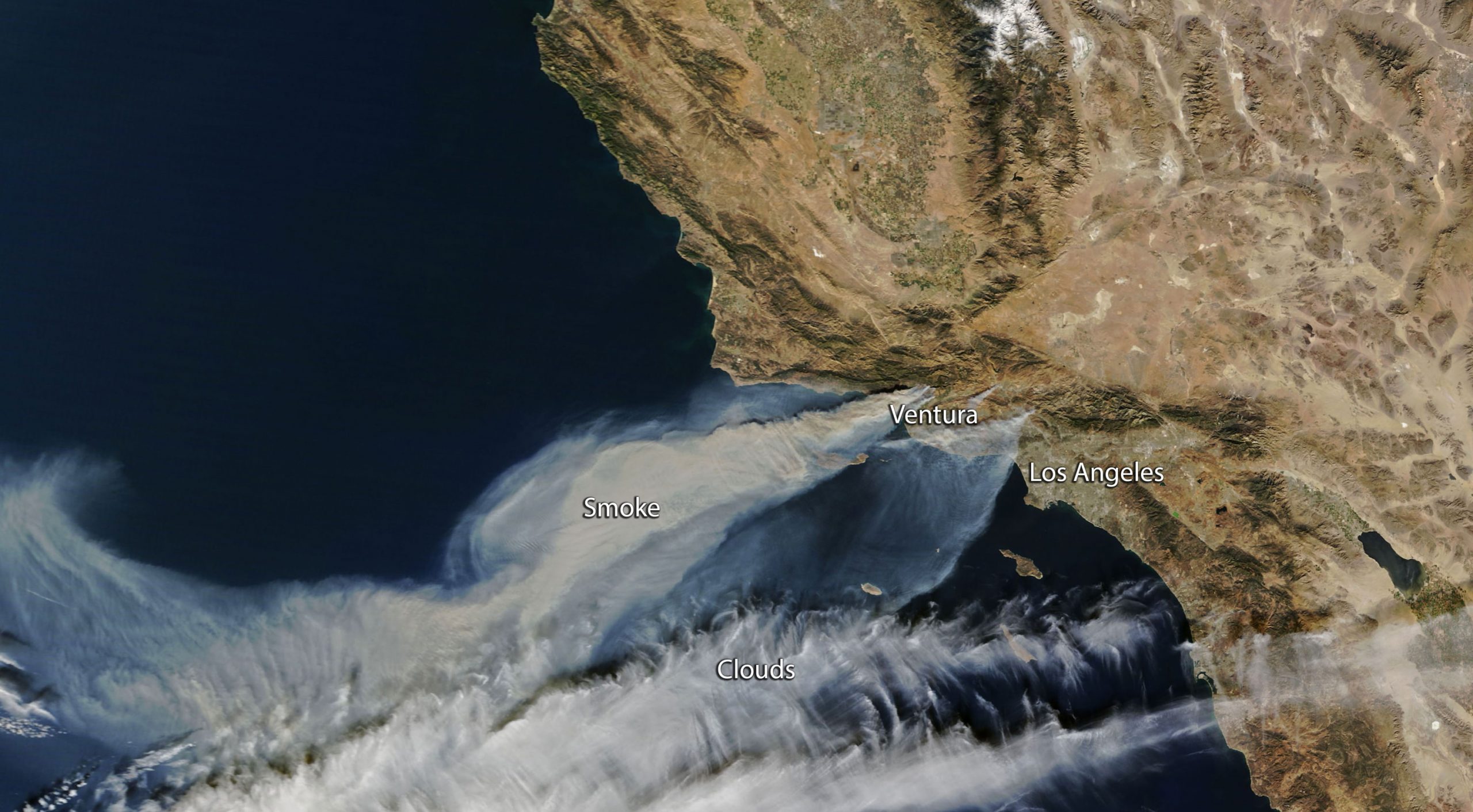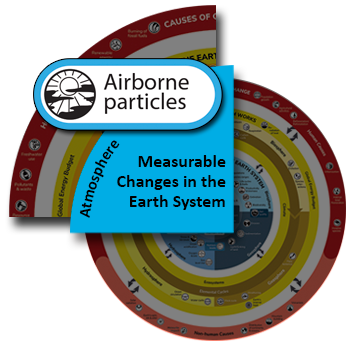Airborne particles are typically classified by their size and can be solid or liquid. They include soot, ash, dust, pollen and aerosols. Airborne particles may be harmful to human health. They can play an important role in ecosystems, for example, via dust particles that add nutrient to soils and the ocean.

A satellite image showing smoke plumes from fires in southern California. Satellite image courtesy of NASA Earth Observatory
A variety of human activities and environmental changes can cause changes to the concentration of airborne particles, including:
- The burning of fossil fuels and agricultural activities, which increase the concentration of airborne particles in the atmosphere.
- Fires, which decrease air quality. Large-scale fires can be the result of accidents, but are also lit deliberately to remove trees and clear land for agricultural activities.
- Wind, which can stir up dust and influences the distribution and concentration of airborne particles.
- The productivity of plants through the release of pollen.
- Rain, which removes or dissolves particles in the atmosphere.
- Volcanic eruptions, which release airborne particles and gases.
- Meteorite impacts, which can eject material into the atmosphere.
Airborne particles affect various Earth system processes and phenomena, including:
- The amount of sunlight that is absorbed or reflected from Earth’s atmosphere. Particles that absorb sunlight have a warming effect, while particles that reflect or scatter sunlight have a cooling effect on Earth’s climate.
- The formation of clouds. Water droplets in clouds form around particles in the atmosphere. Thus, a high concentration of particles can increase the number of water droplets, thereby increasing cloud cover.
- Increasing the rate of snow and ice. For example, particles from the burning of fossil fuels are dark in color and absorb more sunlight than the white snow. Thus, when these dark particles fall on snow they increase surface temperatures, and thus the rate and magnitude of snow and ice melt.
- Regional air quality, which can impact human health.
Can you think of additional cause and effect relationships between air particles and parts of the Earth system?
Visit the air quality, burning of fossil fuels, and the ozone layer pages to explore more connections between the atmosphere and global changes.
